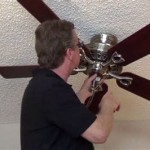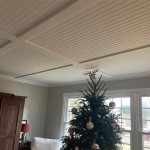Ceiling Fan Oil: What You Need to Know
Ceiling fans are a common sight in homes, providing a welcome breeze during warm weather. However, like any mechanical appliance, they require regular maintenance to function optimally. One crucial aspect of ceiling fan care is oiling the motor. While modern ceiling fans often boast sealed, oil-free motors, older models still benefit from periodic lubrication. Understanding the importance, types, and methods of oiling can help extend the lifespan of your ceiling fan and ensure its smooth operation.
Why Oil Your Ceiling Fan?
Oiling your ceiling fan serves several critical purposes:
- Reduces Friction and Wear: The motor of a ceiling fan contains moving parts that experience friction during operation. Friction generates heat and can wear down the components over time. Oil acts as a lubricant, reducing friction and minimizing wear and tear on the motor.
- Extends Motor Lifespan: By mitigating friction and wear, oiling helps extend the lifespan of your ceiling fan motor. A well-lubricated motor is less prone to overheating and malfunction, allowing it to operate reliably for years to come.
- Minimizes Noise: A noisy ceiling fan is often a sign of a dry motor. Friction between moving parts can cause a grinding or rattling sound. Oiling reduces friction and noise levels, resulting in a quieter fan experience.
- Enhances Efficiency: A properly oiled motor operates more efficiently, consuming less energy. When the motor runs smoothly, it requires less power to achieve the desired speed.
Types of Ceiling Fan Oil
Choosing the right oil for your ceiling fan is crucial. The most common types include:
- Light Machine Oil: This lightweight oil is commonly used for general lubrication purposes, including ceiling fans. It's readily available and provides adequate lubrication for most fan motors.
- Synthetic Oil: Synthetic oil is a more advanced option, offering excellent lubrication properties, heat resistance, and longer lifespan compared to conventional oil. It's a good choice for high-performance fans or for areas with extreme temperatures.
- Silicone Oil: Silicone oil is known for its moisture-repelling properties, making it suitable for areas with high humidity. It also offers good lubrication and heat resistance, but may be more expensive than other options.
Always refer to your fan's manual for specific oil recommendations. The manufacturer may suggest a particular type or viscosity based on the fan's design and motor type.
Oiling Your Ceiling Fan
Oiling a ceiling fan is a straightforward process that typically involves the following steps:
- Disconnect Power: Before attempting any maintenance, always disconnect the power to the ceiling fan by turning off the circuit breaker or removing the fuse. This ensures your safety during the process.
- Locate Oil Ports: Most ceiling fans have oil ports on the motor housing. These ports are typically marked with a small arrow or a symbol that looks like an oil can. However, modern fan motors may not have oil ports as they often use sealed, oil-free designs.
- Apply Oil: Using a small oil can or syringe, carefully apply a few drops of oil into each oil port. Avoid overfilling the ports, as excess oil can lead to problems. Allow the oil to penetrate the motor for a few minutes.
- Wipe Excess Oil: Remove any excess oil from the motor housing using a clean cloth. This prevents potential staining or dripping.
- Test Fan: After oiling, re-connect the power and test the fan for smooth operation. If you hear any unusual noises or notice any issues, it's best to contact a qualified electrician or fan repair specialist.
Remember, frequent oiling is not always necessary. In most cases, oiling your ceiling fan once or twice a year should be sufficient. However, if you live in a dusty or humid environment, you may need to oil it more often. By following these guidelines, you can ensure your ceiling fan operates efficiently and smoothly for years to come.

Ase A7 Exam 3 Flashcards Quizlet

Oil Burner Diagram Quizlet

Bearings From Test Outline Flashcards Quizlet

Falcon 10 Powerplant Flashcards Quizlet

Ceiling Fans In Real Life Decor Makely

Ata 71 73 B737ng Type Course Flashcards Quizlet

B737 Review Engines Flashcards Quizlet

Ch 4 Power Train Elos Flashcards Quizlet

3 14 Cooling Flashcards Quizlet

Furnace Parts Flashcards Quizlet
Related Posts








